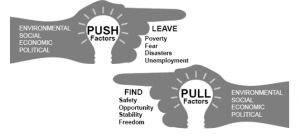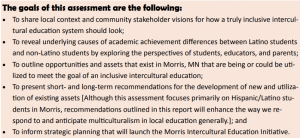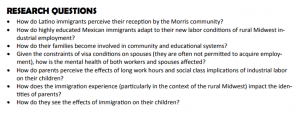My time throughout this online COPLAC course has been so exciting! (You think we’ve used that word enough this semester?!) I have taken many online classes before, but never a class that was this diverse. From working with students from other states in the US to using different mediums like slack, twitter, and WordPress for communication, and then learning to create maps or search through digital archives, I believe this course was by far the most technologically intense course I’ve taken. It took a great deal of commitment for me to be able to balance my time between this independent research and three other individual research projects. I loved collaborating with students in other areas of the country on projects that had definite differences, but also similarities that led us to collaboration throughout the semester and can’t find a word besides “excited” to describe how I feel about my future plans!
Looking back to when Amy first asked me to partner with her for this research and take an in depth look at the history of the people here in Morris, I thought I would make for a good side-kick. But together, we learned to collaborate and process through every step of the project. In August, we began by thinking very broadly about the term “migration” but very narrowly about our community. This was the first turning point in our project. We intentionally separated ourselves from the town we lived in and found a whole world of community archives, historians and research available to us on Stevens County. Then got busy doing research!
As I move into my last semester of my college career and into the workforce, I am thankful that I got to have this experience. The type of collaborative research that I was able to do with Amy as well as other pairs from all over the US really showed me the value in a Liberal Arts education. I am thankful that I was able to utilize my knowledge from my Latin American Area Studies degree in this project while also growing in my skills as a researcher, historian, and community connecter. Through my experiences discussing my project with professors, permanent community members, church leaders, and Mexican immigrants I was able to see the value in personal relationships in research. This paired with existing knowledge allowed for me and Amy to create something really useful. We have a website now that is truly a resource for the Apostolic church, Stevens County, the University of MN-Morris and even other historians.
Amy and I are also planning on using this project as a platform to continue community education. Amy just completed her senior research capstone at UMM on TN-TD visas and some of the misconceptions of visa holders in the rural Midwest. By connecting these two projects, we are going to have a basis to work with community organizations and be able to better educate all of the community members as well as industry leaders in the area about the contemporary concerns and issues that face the people in our area. By using Apostolic history and comparing it to the modern day discussions on the Latino community in Stevens County, Amy and I are very excited to see how we can impact the community.
I will also use my newfound knowledge of and love for WordPress to create a teaching resource for my ESL classes. I am excited to use the technical abilities that I’ve gained to be able to create another resource that has only ever been a concept before. I think this resource will be able to help my students, as well as be a platform for them to continue teaching others. The idea that students are able to teach teachers just as much as they can be taught is something I believe very strongly in, and I am thankful that this COPLACDigital course reinforced it. I cannot wait to begin the next semester with even more research projects and potentially use some of the connections I have made in Morris to learn about the health coverage of immigrant workers and incorporate my interests in immigration, migration, and community building with into my Public Health education.
This is my final thank you to everyone that has followed along with the project this semester, as well as my professors who have supported Amy and I in this endeavor. Gracias por todo lo que hicieron!


